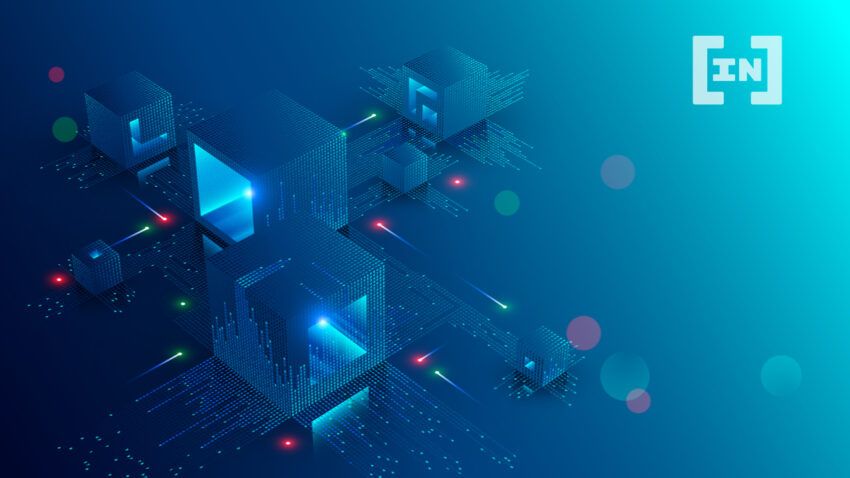Blockchain adoption continues to grow, and so does the importance of scaling in the ecosystem. New applications and increased transaction volume can be accommodated with the help of system throughput rate improvements. Layer 1 vs. Layer 2 debates, in the context of blockchain layers scalability, are frequently the focus of attention in these debates.
To improve network security and record keeping, blockchain layers have been created. In this article, you’ll be able to see how these systems can work together to improve interoperability between blockchains.
In this guide:
- What is blockchain trilemma?
- Layer 1 scaling solutions
- Advantages
- Disadvantages
- Resolving layer 1 issues
- Improvements to consensus protocol
- Sharding
- Layer 2 scaling solutions
- Advantages
- Disadvantages
- Resolving layer 2 issues
- Nested blockchains
- State channels
- Sidechains
- Layer 1 vs. layer2: major differences
- 1. Definition
- 2. Method of operation
- 3. Types of solutions
- 4. Quality
- The future of scaling
- Frequently asked questions
What is blockchain trilemma?

The scalability trilemma refers to a blockchain’s ability to balance three organic properties that constitute its core principles: security, decentralization, and scalability.
The trilemma states that a blockchain can only possess two of the three properties, never all three simultaneously. Consequently, the current blockchain technology will always need to sacrifice one of its fundamental properties for its functionality. Bitcoin is a prime example of this; while its blockchain has optimized decentralization and security, it has offered scalability.
Most importantly, there is currently no cryptocurrency capable of achieving the maximum of all three features. In other words, cryptocurrencies prioritize two or three to the detriment of the remaining one.
/Related
MORE ARTICLESBest Christmas Crypto Promotions in 2022
Top 10 Telegram Channels for Crypto Signals in 2022
9 Best Crypto Exchanges for Beginners
Copy Trading: A Definitive Guide for Beginners (2022)
What Is the Crypto Fear and Greed Index?
Top 7 Crypto Debit Cards in Europe
How To Make Money With Bitcoin in 2022: 9 Proven Methods
Web3 Jobs: How to Get a Job in Crypto Sector
Who Owns the Most Bitcoin in 2022?
Many developers are working diligently to solve the blockchain trilemma, with some techniques and ideas that aim to solve the scalability problem already implemented. Depending on their level of blockchain implementation, these concepts and techniques manifest as either layer 1 or layer 2 solutions.
A wide range of cryptocurrencies can process thousands of transactions per second, but they do so at the expense of decentralization or security. Bitcoin and Ethereum, in contrast, are two of the most secure and decentralized digital currencies. Cardano, Avalanche, and Solana are layer 1 cryptocurrencies that have gained prominence by capitalizing on Bitcoin and Ethereum’s scaling issues.
Layer 1 scaling solutions

The outline of scaling differences between layer 1 and layer 2 blockchains would be incomplete without the definition of layer 1 blockchains. As its name suggests, layer 1 blockchain network refers to a network’s foundational protocol.
Layer 1 scaling solutions improve the blockchain layer’s foundation to facilitate scalability improvements. This offers a wide range of ways to increase the scalability of blockchain networks. Layer 1 solutions, for instance, can enable direct modifications to protocol rules to increase transaction capacity and speed. Likewise, layer 1 scaling solutions can provide greater capacity for accommodating additional data and users.
Common scaling strategies for layer 1 include increasing the block size or the rate of block creation.
However, the blockchain layer 1 vs. layer 2 debate would consider the two most significant layer 1 scaling solutions. Changes to the consensus protocol and sharding are the two fundamental modifications for achieving scaling at layer 1 in blockchain networks.
For instance, some consensus mechanisms, such as proof-of-stake, may be more efficient than proof-of-work for a blockchain layer. On the other hand, sharding facilitates the distribution of the network’s workload across multiple datasets or shards.
Advantages
- Scalability would be the most obvious advantage of layer 1 blockchain solutions. Layer 1 blockchain solutions necessitate protocol modifications for enhanced scalability.
- A layer 1 blockchain protocol provides decentralization and security with high scalability and economic viability.
- Layer 1 enhances ecosystem development. In other words, layer 1 scaling solutions could incorporate new tools, technological advancements, and other variables into the base protocols.
Disadvantages
The inability of layer 1 networks to scale is a common issue. Bitcoin and other large blockchains have struggled to process transactions in times of high demand. Proof-of-work (PoW), the consensus mechanism used by Bitcoin, requires a significant amount of computational resources.
Resolving layer 1 issues

To achieve layer 1 network scaling, fundamental updates are needed for a blockchain, which include:
Improvements to consensus protocol
Some consensus mechanisms are more efficient than others. PoW is today’s consensus protocol on popular blockchain networks such as Bitcoin. PoW is secure, but it can be slow. As a result, PoS is the consensus mechanism of choice for most new blockchain networks. This is an important factor in the layer 1 vs. layer 2 blockchain debate.
PoS systems don’t require miners to solve encryption algorithms using a lot of computing power. Instead, network participants use PoS to process and verify transaction blocks. Ethereum will transition to a PoS consensus algorithm, which is to increase the network’s capacity while enhancing decentralization and preserving network security.
Sharding
Adapted from distributed databases, sharding has become one of the most popular layer 1 scaling solutions. Sharding is the process of breaking up the state of the whole blockchain network into separate sets of data called “shards.” A task that is easier to handle than seeking all nodes to take care of the whole network. The network processes these shards in parallel, allowing for the sequential processing of multiple transactions. In addition, each network node is assigned to a specific shard rather than maintaining a complete copy of the blockchain. Each shard sends proofs to the mainchain and shares addresses, general states, and balances with other shards using cross-shard communication systems. Along with Zilliqa, Qtum, and Tezos, Ethereum 2.0 is a prominent blockchain protocol currently investigating shards.
Layer 2 scaling solutions

The primary aim of layer 2 scaling is to employ networks or technologies that operate on top of a blockchain protocol. A blockchain network could achieve increased scalability and efficiency with the aid of an off-chain protocol or network.
Layer 2 scaling solutions entail essentially shifting the transaction load of a blockchain protocol to an off-chain architecture. The off-chain architecture would notify the main blockchain of the ultimate results of the transferred transaction. Layer 2 scaling solutions facilitate the delegation of data processing tasks in support architecture more efficiently and flexibly. As a result, the core blockchain protocol does not experience congestion, making scalability possible.
Lightning Network, a scaling solution for Bitcoin, is one of the most prevalent examples of layer 2 scaling solutions. In layer 1 vs. layer 2 blockchain debates, you can also find many other solutions supporting layer 2 scaling.
Advantages
- One of the most significant advantages of a layer 2 solution is that it does not affect the performance or functionality of the underlying blockchain to degrade the network’s overall performance.
- Layer 2 solutions, such as state channels and Lightning Network, expedite the execution of multiple micro-transactions. This is because it doesn’t undergo minor verifications or pay unnecessary fees to conduct such transactions.
Disadvantages
- Layer 2 has a negative impact on blockchain connectivity: One of the most significant issues in blockchain right now is the lack of interconnectivity between different blockchains (for example, you cannot connect with someone on Ethereum if you are on Bitcoin). This is a highly problematic matter. With layer 2, it can exacerbate this issue by limiting interconnectivity within a network, as layer 2 users are restricted to the protocols of the solutions they employ, which is becoming a challenge.
- Privacy and safety issues: As you may have observed in the preceding section, various solutions offer varying levels of security and privacy. However, none of the solutions provide the same level of security as the major chains, so depending on your priorities, you should give it some thought.
Resolving layer 2 issues

Nested blockchains, state channels, and sidechains are all examples of solutions for scaling at layer 2 level.
Nested blockchains
Essentially, a nested blockchain is a blockchain within, or rather, on top of, another blockchain. The nested blockchain typically comprises a primary blockchain that establishes parameters for a more extensive network, with executions occurring within an interconnected network of secondary chains.
On top of a mainchain, many blockchain tiers can be built, each with its own parent-child connection. The parent chain delegates tasks to child chains, which then complete them and returns the results to the parent.
Unless there is a need for dispute resolution, base blockchain does not participate in the network functions of subsidiary chains. This model’s work distribution reduces the processing load on the mainchain, which exponentially improves scalability. The OMG Plasma project illustrates layer 2 nested blockchain infrastructure, which is used on top of the layer 1 Ethereum protocol.
State channels
A state channel enables bidirectional communication between a blockchain and off-chain transactional channels, enhancing transactional capacity and speed. A state channel does not cause validation by layer 1 network nodes. Rather, it is a network-adjacent resource isolated via multi-signature or smart contract mechanisms.
When transactions are finalized on a state channel, a final “state” of the channel and its changes are written on the underlying blockchain. State channels include Liquid Network, Ethereum’s Raiden Network, Celer, and Bitcoin Lightning. In a trilemma tradeoff, the state channels give up a portion of their decentralization for greater scalability.
Sidechains
A sidechain is a transactional chain adjacent to a blockchain, typically used for bulk transactions. Sidechains use a consensus mechanism independent of the main chain, and users can optimize them for speed and scalability. The primary function of the main chain in a sidechain architecture is to maintain overall security, validate batched transaction records, and resolve disputes.
Sidechains are different from state channels in several fundamental ways. First, sidechain transactions are not private between participants; they are recorded publicly on the blockchain. Additionally, sidechain security breaches do not affect the main chain or other sidechains. The infrastructure of a sidechain is typically built from the ground up, so establishing one could require significant effort.
Layer 1 vs. layer2: major differences

The fundamental outline of layer 1 and layer 2 scaling solutions provides the proper basis for distinguishing between them. Here are some of the key distinctions between layer 1 and layer 2 scaling solutions for blockchains.
1. Definition
Layer 1 scaling solutions modify the blockchain protocol’s base layer to achieve the desired enhancements. For instance, the block size can adjust to accommodate more transactions, or users can alter the consensus protocols to improve speed and efficiency.
Layer 2 scaling solutions function as off-chain solutions that share the load of the primary blockchain protocol. Specific information processing and transaction processing tasks are delegated to layer 2 protocols, networks, or applications by the mainnet of a blockchain protocol. The off-chain protocols or solutions complete the designated task and report the outcome to the main blockchain layer.
2. Method of operation
With layer 1 blockchain networks, the actual scaling method focuses on modifying the core protocol. With layer 1 scaling solutions, you must change blockchain protocols. Therefore, you would not be able to immediately scale back the modifications if the transaction volume drastically decreases.
In contrast, layer 2 scaling solutions function as off-chain solutions that operate independently of the primary blockchain protocol. Off-chain protocols, networks, and solutions report only the ultimate results required by the immediate blockchain protocol.
3. Types of solutions
In the case of layer 1 blockchain solutions, consensus protocol enhancement and sharding are two prominent types of solutions. Scaling of layer 1 includes alterations to block size or block creation speed to ensure the desired functionality.
Regarding blockchain layer 2 scaling solutions, there is virtually no restriction on the solutions that can be implemented. Any protocol, network, or application can function as layer 2 solutions off-chain for blockchain networks.
4. Quality
Layer 1 networks serve as the definitive source of information and are ultimately accountable for transaction settlement. On layer 1 networks, a native token is used to access the network’s resources. Another essential characteristic of layer 1 blockchain networks is innovation in consensus mechanism design.
Layer 2 networks provide the same functionality as layer 1 blockchains, plus additional characteristics. For example, Layer 2 networks boost throughput and programmability whilst lowering transaction costs. Each layer 2 solution has its method for remapping transactions to their respective base layer.
The future of scaling
Scalability is the factor contributing to the inability of the blockchain sector to achieve widespread crypto acceptance. As the demand for cryptocurrencies rises, the requirement to scale blockchain platforms will also grow. Both layer 1 versus layer 2 scaling has distinct costs and benefits. Therefore, the future of scaling will involve a combination of layer 1 and layer 2 solutions.
If you’re still having trouble wrapping your head around the technical concepts behind blockchain scaling, head over to the BeInCrypto Telegram group. The folks over there will explain everything to you.




